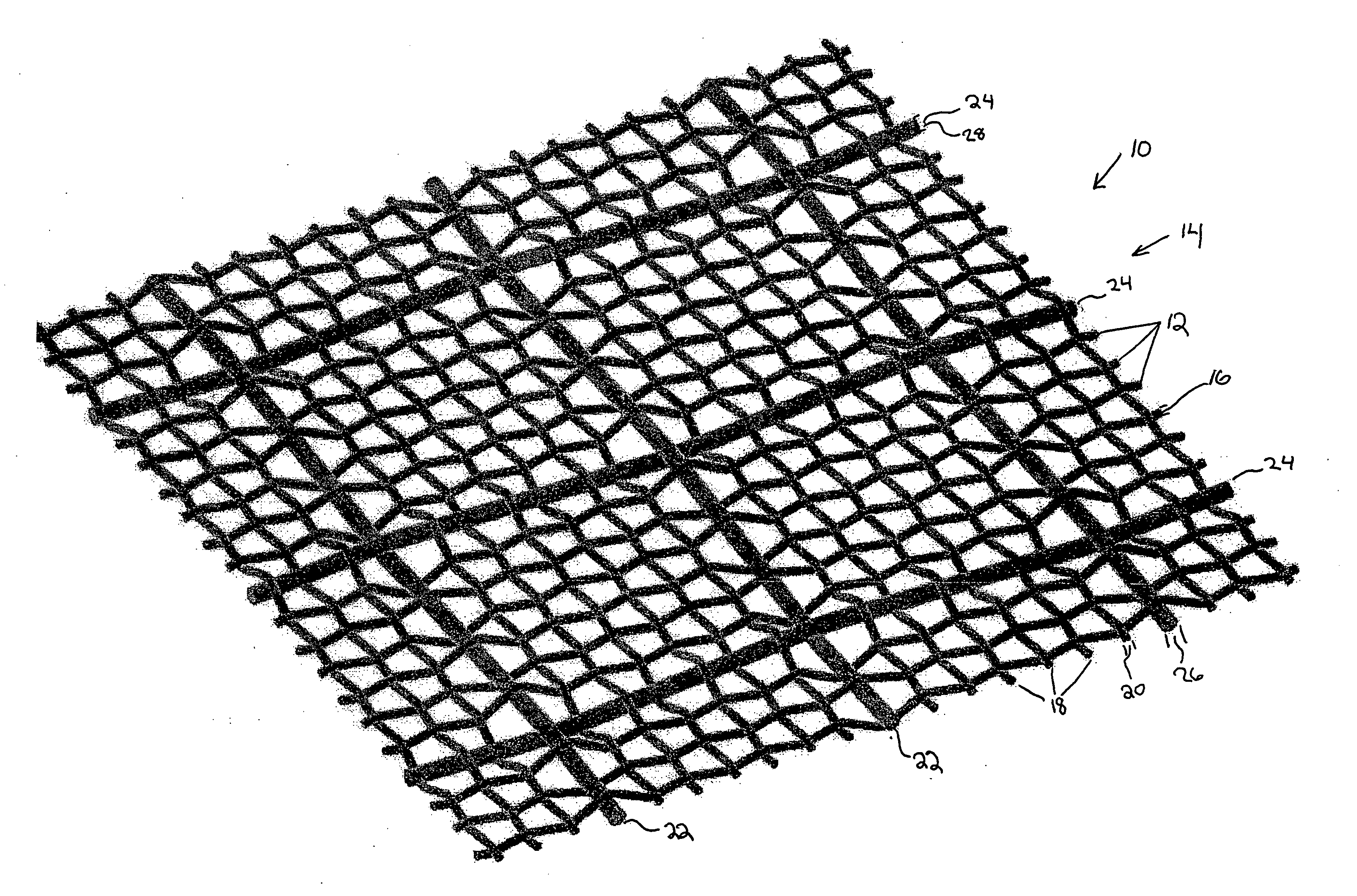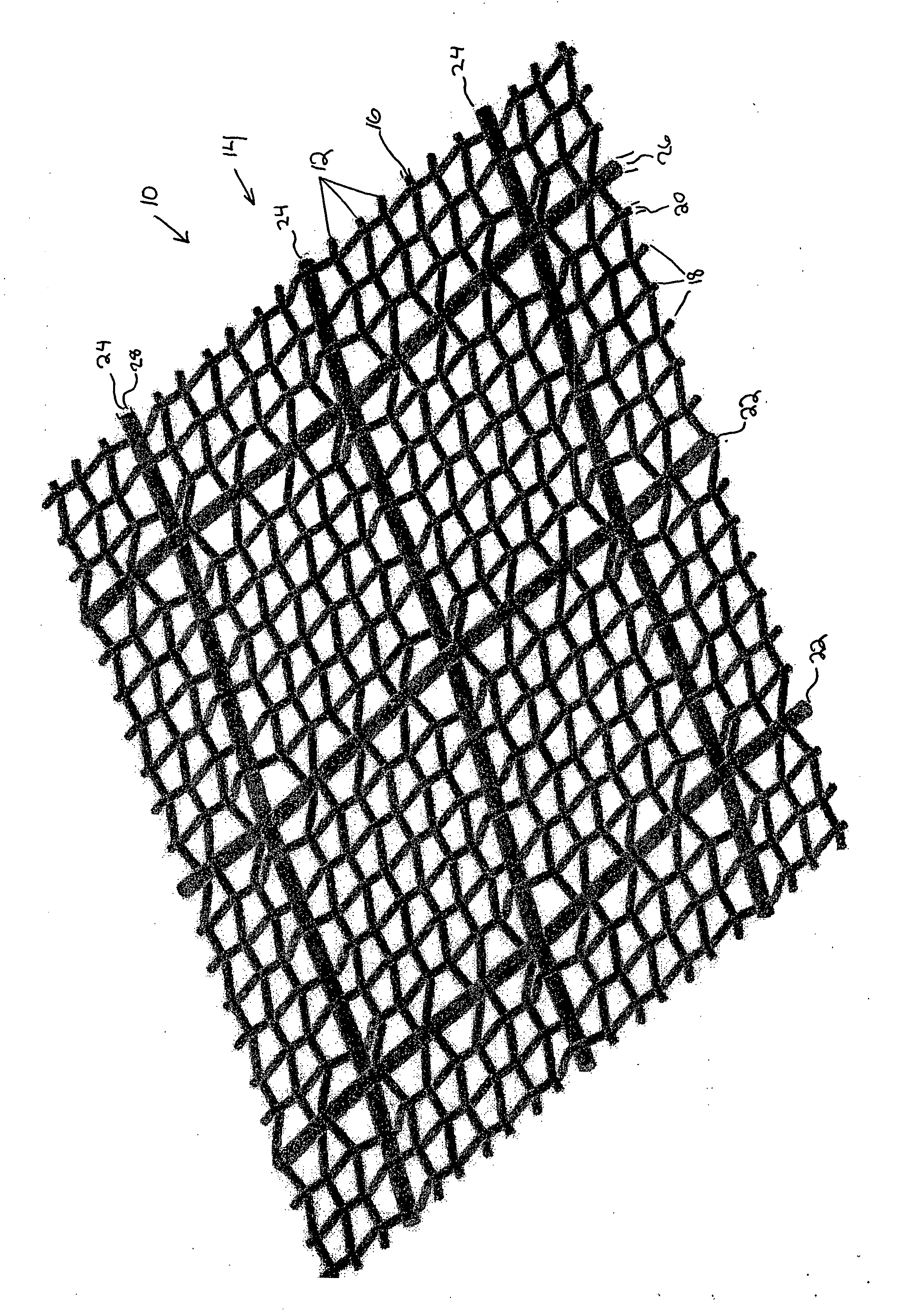Multidiameter wire cloth
- Summary
- Abstract
- Description
- Claims
- Application Information
AI Technical Summary
Benefits of technology
Problems solved by technology
Method used
Image
Examples
Embodiment Construction
[0027] Referring to FIG. 1, a wire mesh cloth 10 is illustrated. The wire mesh cloth 10 has an arrangement of first wires 12 which extend in a horizontal direction 14. The first wires 12 are provided with a first diameter 16. The first diameter 16 is constant throughout all of the arrangement of first wires 12. A second arrangement of wires 18 is also provided with a constant second set of diameters 20. A third arrangement of wires 22 is further provided which are parallel in direction to the arrangement of second arrangement of wires 18. The third arrangement of wires 22 is interspersed in the second arrangement of wires 18 such that the third arrangement of wires 22 extend in a parallel direction to that of the second arrangement of wires 18. A fourth arrangement of wires 24 is also provided in an interspersed manner with the wires of the arrangement of first wires 12. The fourth arrangement of wires 24 extends in a parallel direction to that of the horizontal direction 14 of the ...
PUM
| Property | Measurement | Unit |
|---|---|---|
| Fraction | aaaaa | aaaaa |
| Fraction | aaaaa | aaaaa |
| Fraction | aaaaa | aaaaa |
Abstract
Description
Claims
Application Information
 Login to view more
Login to view more - R&D Engineer
- R&D Manager
- IP Professional
- Industry Leading Data Capabilities
- Powerful AI technology
- Patent DNA Extraction
Browse by: Latest US Patents, China's latest patents, Technical Efficacy Thesaurus, Application Domain, Technology Topic.
© 2024 PatSnap. All rights reserved.Legal|Privacy policy|Modern Slavery Act Transparency Statement|Sitemap



